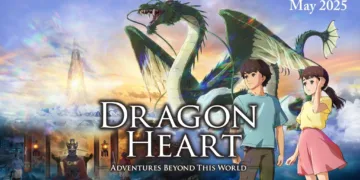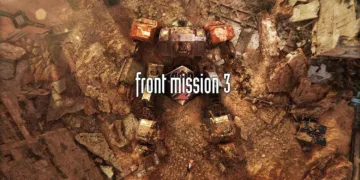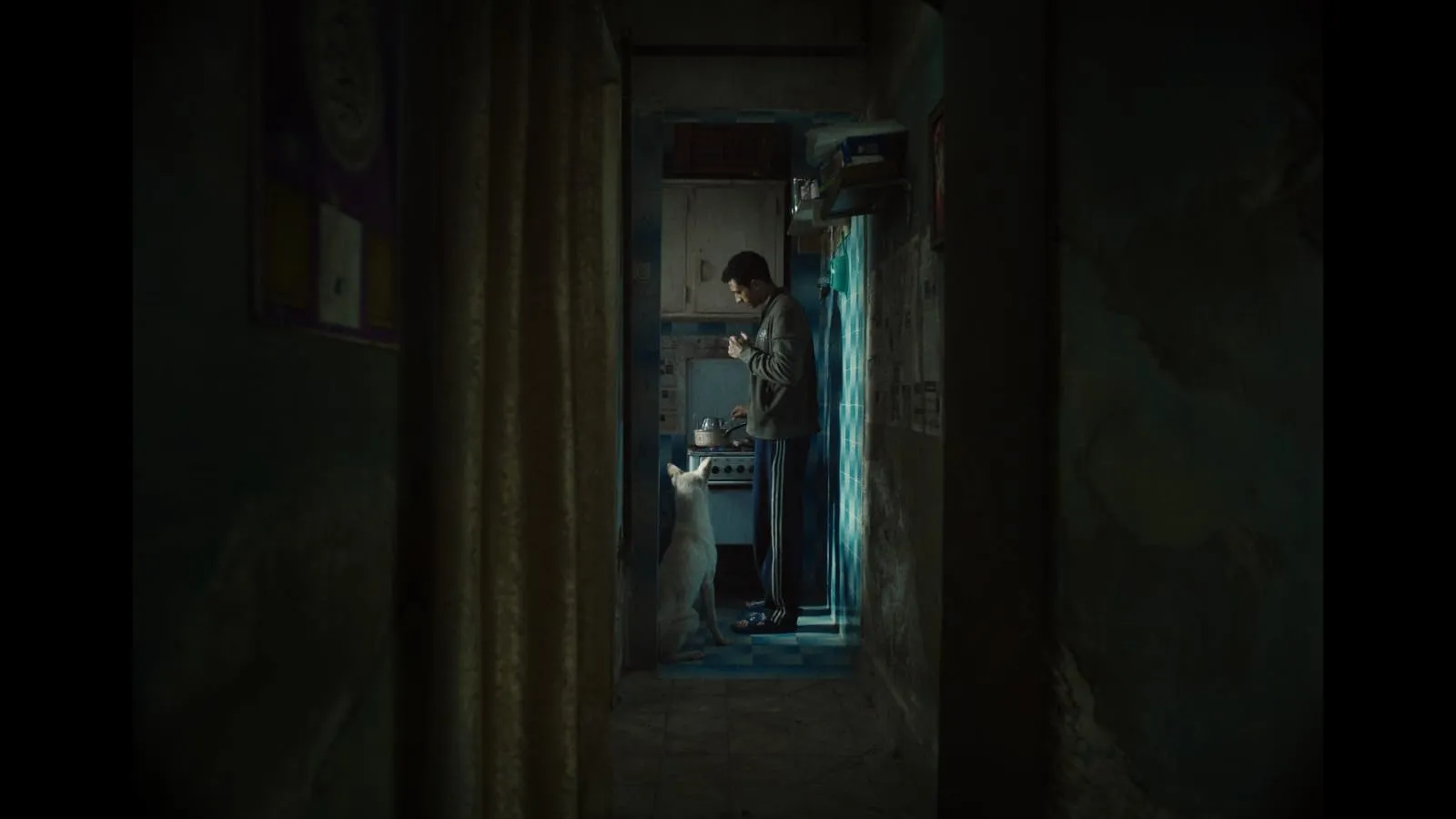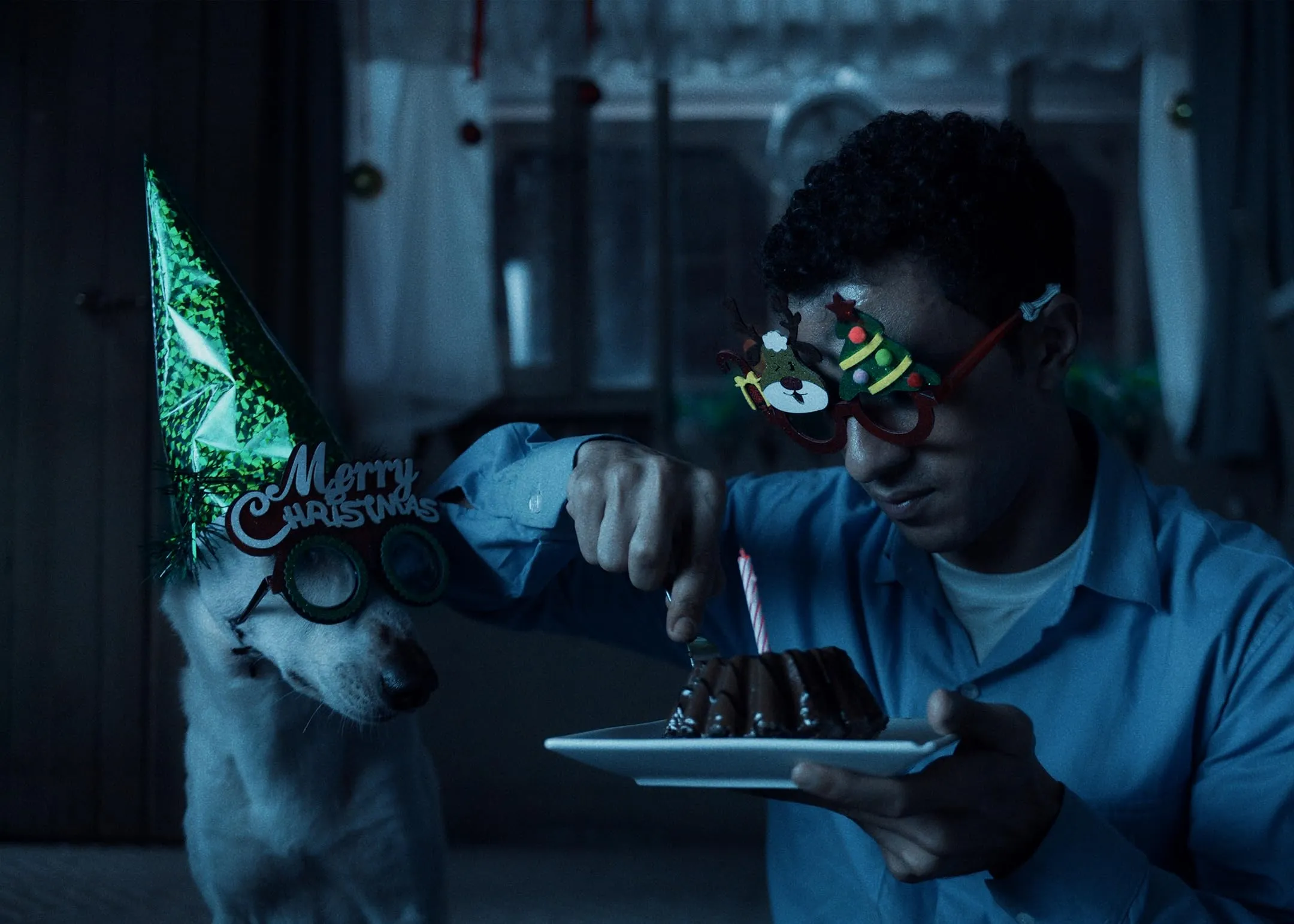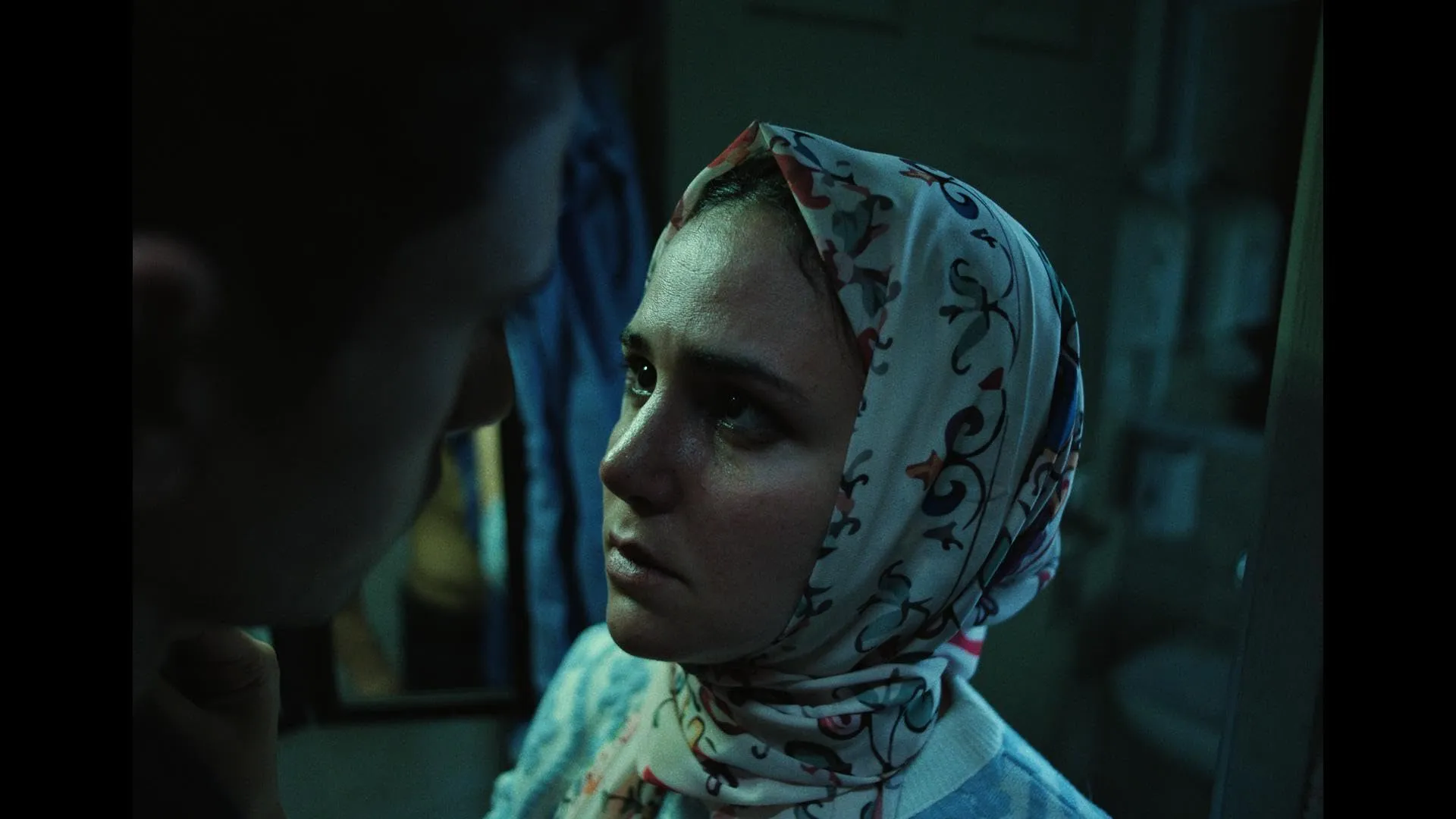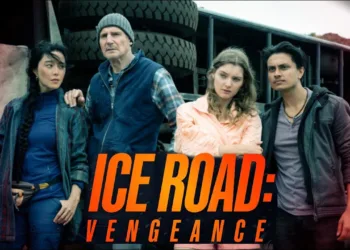“Seeking Haven for Mr. Rambo” casts its gaze upon a modest corner of Cairo, where the weight of hardship melds with moments of ephemeral tenderness. The film unfolds within a working-class enclave, its cobblestone streets whispering tales of survival and silent yearning. In this setting, the narrative probes the fissures of existence, questioning the nature of hope amid pervasive gloom.
Khaled Mansour presents his first full-length work as an artisan of understated narrative. His previous experiments through short films converge into a debut that exudes an austerity of vision and an almost palpable melancholy. The film’s premiere at Venice marks a moment of celebration for a voice that appears to rise from the dark soil of Cairo’s underbelly.
Here, a tender portrait of urban struggle finds a stage where silent laments and muted dreams stir beneath the surface. Every frame reflects an atmosphere laden with introspection, a quiet reckoning with the void shadowing the human spirit.
Even as the narrative remains grounded in everyday conflicts, it offers a space where questions of fate and existence are etched in the interplay of light and shadow. Its deliberate pacing and shadowed visuals evoke a brooding introspection that compels one to reflect on the transient nature of human hope.
Plot and Pulse: The Structure of Existential Descent
In this film, we witness a narrative that unfolds with a quiet gravity. Hassan shares his modest life with his mother in a small Cairo dwelling, where every worn brick seems to murmur the burdens of everyday survival.
His devoted canine, Rambo, offers silent solace amid a setting marked by routine hardships and fleeting tenderness. Their existence is disrupted when Karem, a domineering figure whose presence casts an unyielding shadow, intrudes with an aggression that fractures the fragile calm of their world.
A single act by Rambo—biting Karem—serves as a spark that transforms ordinary tension into a forceful collision of human frailty and defiant loyalty. That moment fractures the monotony of Hassan’s days, propelling him into an unforeseen struggle to secure a place of refuge for his companion. It is a moment that reflects the often arbitrary cruelty of existence, where a small act reverberates into profound consequences. Each subsequent step Hassan takes to shield Rambo is marked by an awareness of the relentless pull of fate and the inherent uncertainty that shadows every human decision.
The film’s structure is marked by a deliberate pacing that oscillates between a plain narrative and sudden bursts of emotive intensity. The simplicity of the storyline serves as a canvas upon which deeper, existential concerns are sketched in muted hues. Moments of stark clarity emerge from the mundane, evoking the inherent tension between duty and vulnerability.
The narrative does not overwhelm with complexity; instead, it exposes the raw essence of life through unvarnished events and the unspoken despair that underpins each interaction. The plot traverses the raw terrain of human suffering and steadfast devotion, inviting viewers to ponder the often-painful nature of existence without offering tidy resolutions.
Whispers of Identity: Characters in the Crucible
Hassan stands amid inner conflict and external pressures, his life revealing quiet resilience and subtle resistance. His journey toward self-respect emerges through soft-spoken strength while facing an environment seeking to erode his delicate principles.
The internal struggle, connected to his loyal canine friend despite oppressive circumstances, unfolds through moments both silent and deeply moving. His wordless battle reflects timeless questions of personal identity and the relentless grip of destiny.
In Hassan’s story’s shadows, his mother appears as an unwavering presence whose quiet resolve masks deep emotional wounds. Her demeanor, filled with subdued calm, anchors the daily chaos while suggesting unmentioned personal costs. Karem strikes a stark contrast—representing unbridled aggression and unyielding beliefs about control, embodying social tensions that fragment their world.
Rambo, the steadfast dog, surpasses typical companionship. Wearing a small helmet and creating unexpected moments of lightness when riding in the sidecar, the animal represents an intricate symbol of devotion and pure connection. His existence challenges understanding of human relationships, providing comfort while reflecting the nuanced emotional landscapes of his human partner.
Essam Omar’s performance subtly supports this exploration. Through controlled movements and measured expressions, he communicates profound emotional depths beyond verbal articulation. Each momentary glance and slight postural shift invites deeper reflection, creating space for interpretation within a narrative exploring internal experiences and urban challenges.
Shadowed Ideals: Themes and Symbolism
In this work, manhood emerges as a dual-edged force. Karem’s abrasive demeanor exposes a rigid, uncompromising model of masculinity—a force that dismisses tenderness and regards vulnerability as frailty.
Hassan, in quiet contrast, carries a hesitance that reveals an inner conflict. His guarded sensitivity questions the strict codes of manliness, suggesting that the expression of inner uncertainty might serve as a quiet act of defiance against a harsh, unyielding norm.
The film paints Cairo’s worn streets with a stark portrayal of economic strain. The pressure of impending eviction and the omnipresent specter of social marginalization animate every frame. These scenes offer a raw depiction of a city where the weight of poverty shapes existence. The oppressive atmosphere, imbued with the shadows of unmet needs and abandoned hopes, invites a reflection on how economic forces sculpt individual lives in ways both visible and subtle.
Amid the bleak backdrop, the bond between Hassan and his mother stands as a muted beacon of support. Their interactions, filled with unspoken understanding and shared sacrifices, provide a counterpoint to the cruelty of their external world. Equally, Hassan’s steadfast attachment to his dog, Rambo, interlaces his personal struggle with a search for solace in small, steadfast acts of care—a silent defiance against the erasure of his own worth.
Symbols appear as understated markers throughout the film. Rambo’s modest helmet and the modest motorcycle sidecar, at times appearing almost whimsical, transform into icons of resilience and the yearning for escape. They hint at a recurring motif of abandonment, echoing the silent absence of a guiding paternal presence. Such elements, though modest in appearance, cast a long shadow, provoking contemplation on the nature of identity and the slow, often painful evolution of the self.
Illumination Amid Shadows: Mansour’s Visual Poetics
Khaled Mansour weaves his story with unflinching dedication to reality, guiding viewers through urban discomfort. His storytelling emerges like a slow-burning coal, balancing life’s cold harshness with unexpected moments of warmth. A measured restraint defines his approach—concentrating on Cairo’s street textures and human rhythms—urging contemplation of hope’s delicate essence.
Visual compositions seize attention through unfiltered frames. Each scene reveals the city’s raw core, exposing unspoken realities without artifice, as if the camera witnesses hidden truths. Deliberate stark imagery records the environment while reflecting characters’ internal worlds.
Sound intertwines with visual storytelling; a sparse accordion and soft guitar strings create an unsettling atmosphere for the unfolding drama. These auditory elements penetrate viewers’ awareness, their melancholic tones carrying the persistent weight of human isolation. Musical elements move through the film’s tempo, marking quiet contemplative moments amid underlying tension.
Technical selections, like motorcycle sidecar scenes, introduce unexpected lightness. Editing—precise and evocative—cuts through the narrative, framing harsh reality and hidden poetic subtleties. Calculated, almost instinctive decisions explore deeper questions about human experience within a shifting world.
Resonance Amid the Quiet Storm
The film creates a careful balance between lightness and seriousness. Unexpected humor—often emerging through Rambo’s quirky behavior—breaks the somber storytelling, offering brief moments that highlight human capacity for joy amid difficult circumstances. These light elements reveal the subtle ability to find amusement when confronting persistent challenges.
The core of the film explores the deep connection between Hassan and his faithful dog. Shared experiences—quiet meals together, unspoken understanding through exchanged glances—carry emotional depth. These glimpses of daily life uncover layers of human fragility, showing how small interactions can construct deeper emotional landscapes.
Quiet strength permeates the narrative, reflecting the silent struggles within a world defined by constant survival. Each measured interaction and deliberate silence invites contemplation about human endurance, seeking comfort through isolation, and recognizing faint glimmers of hope lingering beneath surface tensions. The storytelling moves with careful rhythm, creating an atmosphere both introspective and emotionally exposed.
Echoes of Cultural Reverberation
“Seeking Haven for Mr. Rambo” presents a narrative that reflects the harsh and tender rhythms of Cairo’s working-class existence. Through the modest life of Hassan and his steadfast companion, the film reveals a world where quiet suffering and persistent hope intermingle.
The simplicity of the plot belies the depth of its meditation on the human spirit—a spirit pressed by daily trials and the longing for dignity in a space where every shadow speaks of hardship.
Cairo unfolds as a living mosaic, its crowded streets and neglected corners echoing the voices of those left unheard. The film portrays the struggles of economic precarity and social isolation with a raw honesty that forces the viewer to confront bitter truths of survival.
The interactions between family members, and the touching devotion shared between a man and his dog, suggest that moments of tenderness may emerge from the depths of despair. Each image lingers with a subtle melancholy, evoking questions about sacrifice and the fragile nature of hope in the face of relentless adversity. The cinematic expression here offers a reflective pause—a contemplation of life’s intricate balance between the weight of loss and the gentle persistence of the human heart.
The Review
Seeking Haven For Mr. Rambo
Seeking Haven for Mr. Rambo emerges as a quiet meditation on the contradictions of existence. In the dim corners of Cairo, it portrays sorrow mingled with soft sparks of hope. Mansour's delicate directorial touch and nuanced performances invite reflection on human frailty and resilience. The film’s understated narrative and subtle imagery evoke a world where loss and tenderness intermingle, stirring contemplations on the nature of struggle.
PROS
- Thoughtful portrayal of human resilience
- Poetic, minimalist direction that immerses the viewer in the stark realities of urban life
- Nuanced performances that evoke genuine emotion
- Authentic depiction of working-class struggles in Cairo
CONS
- Deliberate pacing that may feel sluggish to some
- A narrative simplicity that could leave certain storylines underexplored

























